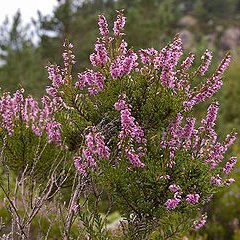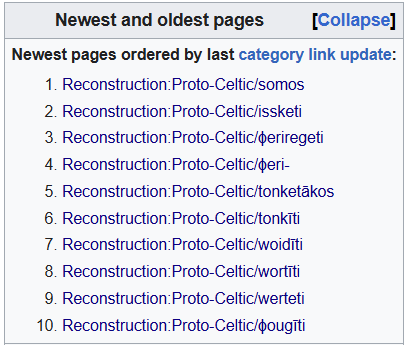
Mellohi
@Mellohi_enwikt
Followers
149
Following
787
Media
53
Statuses
607
Amateur linguist interested in Old Irish and other language families like Japonic and Berber. Avid Wiktionary and Wikipedia editor for Proto-Celtic.
Joined October 2020
@MWeissOHCGL @MJKue For (1.) one of my colleagues thinks that λίμνη arose analogically to limV- relatives in the same word family.
0
0
0
Hello @MWeissOHCGL @MJKue, me and a few colleagues were confused about RRRC sequences and syllabification:. 1. How could λίμνη arise if the usual rules would parse zero-grade limn- into l̥ym̥n-?. 2. In the verb minewti, in the 3pl with m-y-n-w is the -y- syllabic or the m and n?.
1
0
0
A curious thought about yet another EDPC entry @ChronHib @AndersRJorg, is it possible that koret- here could be a -ets derivative of *kor- "putting, throwing", instead of a substrate borrowing?
1
0
2
Hello @eDIL_Dictionary, I found another typo in it:.In the citation for the quote "croicni alta", the citation to ZCP should say ZCP xxx (i.e. vol. 30) not xx (i.e. vol. 20).
1
0
1
@ChronHib *adast- "suitable" and deriv. komadast- confused me as Falileyev and Koch reconstruct an o/a-stem adjective while EDPC goes with a u-stem. OIr. deriv. comadas is an o/a-stem, so would o/a-inflection be original?.
0
0
0
Going back to this one, I presume that with the loss of productivity of i-reduplicated presents, Celtic speakers would fail to segment yeig-e/o- as one and thus reform an e-grade s-subjunctive as if to a root *yeig-.
@Mellohi_enwikt Hmm, I guess the issue then is that we shouldn't expect the subjunctive íexsetesi to be formed to the reduplicated present stem, at least based on its behaviour in the other Celtic languages. We have so few tokens in Gaulish that we can't really be sure, of course.
2
0
2
This is what I wrote on the matter at
@ChronHib what is supposed to be the compounding form of *ī-stems in Celtic? I see *lubigorto- cited for "herb garden" (including by you) even though "herb" seems to me an obvious ī-stem given nom. luib, gen. lubae. .
0
0
1














